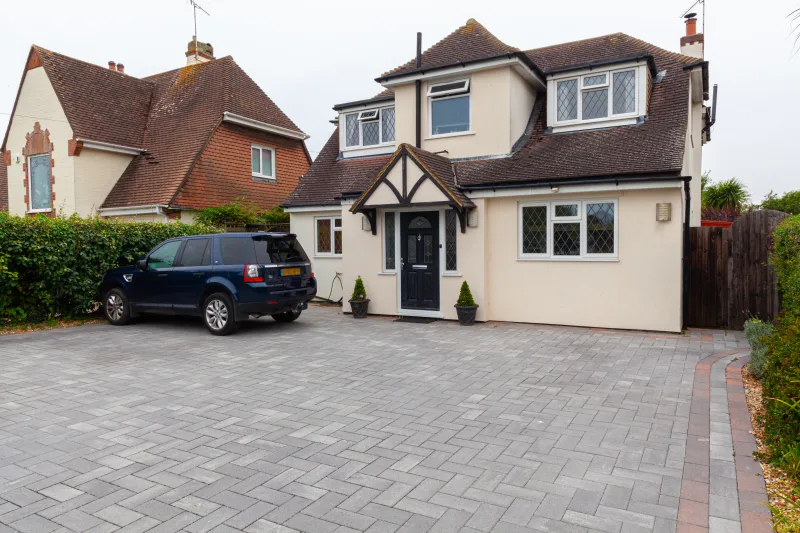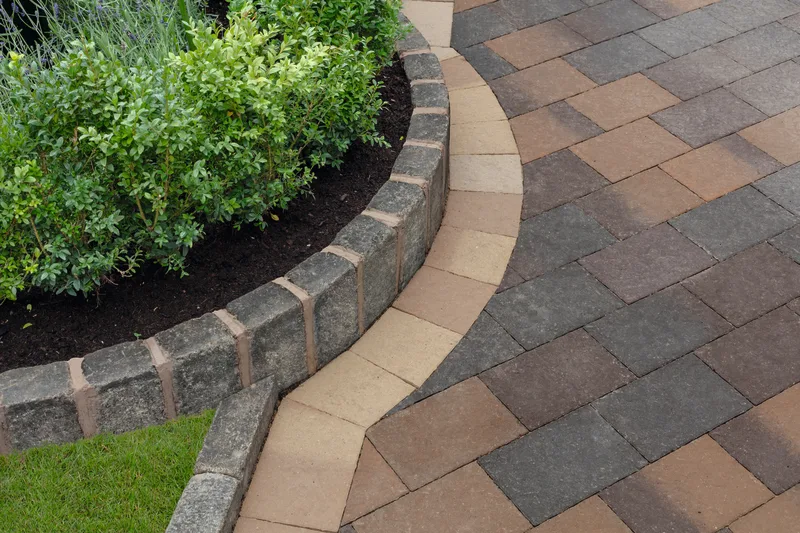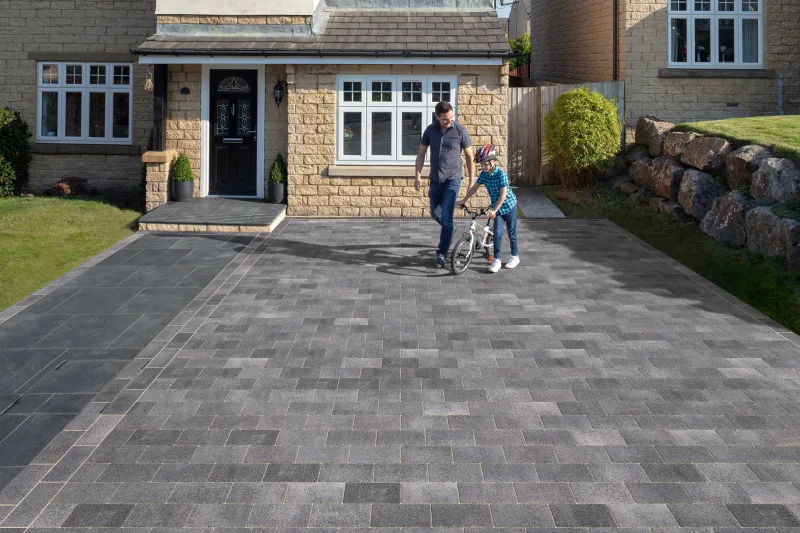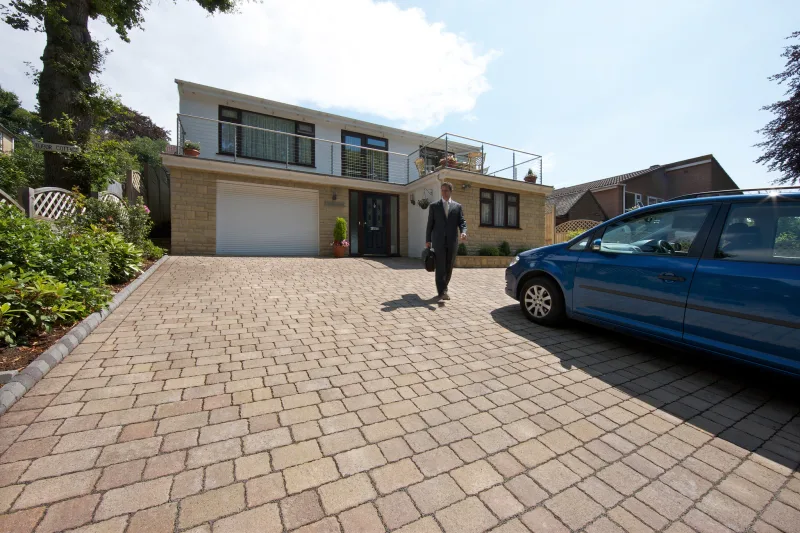Blog
A driveway is more than just a convenient area for off the road parking, it’s the opportunity to make a good first impression with your home, as well as add value when you come to sell. But where do you start with planning a driveway? We asked Marshalls Head of Technical Operations, Trevor Knight, to share his best tips and professional advice about what to take into consideration when installing a new driveway.
1. Practicality and style

Driveline Nova Smooth in Pebble Grey
When installing a new driveway, there are two main considerations. You need to consider the practicality of the driveway and its intentions. How many people live in your home? Do you have regular visitors? Growing families need to maximise the space for cars, taking into account future teenagers and car drivers too. Those who may be looking to sell in the near future need to focus more on kerb appeal; removing tired old tarmac and replacing with new block paving can add value to your home.
2. Ease of access
There’s no set minimum width for a drive, so the design you choose needs to be practical for the type and number of vehicles that are going to be using it. You should take into account the amount of vehicles you have next to each other and make sure car doors can open easily. Ensure your design gives you easy access from the highway to your driveway, and make sure it is wide enough to allow reversing into your drive from the road, if you need to. Driveway edging stones are a great way of separating your driveway from shrubbery or a pathway – ask your landscaper for ideas on this.
3. Trees and shrubbery

Drivesett Coppice in Cedar and Pennant Blend with Oak Border
Trees and shrubs are a great way to make the front of your house more private, but bear in mind that any excavation for your driveway could damage existing roots, plus any utilities cables. This is where the choice of a good designer or contractor comes in. They will advise on the correct planting for trees and shrubs that won’t send the roots into your new driveway and undermine the sub base, but will still add biodiversity. Make sure you talk to your installer about any concerns before the work is carried out.
4. Driveway accessories
There are all sorts of ways to turn your new driveway into an inviting entrance to your home. You could choose to have lighting built into the driveway using encapsulating LED lights or perhaps install a range of lights into the kerbs. And when it comes to kerbs, there are options that cater for every taste. The Drivesett Kerb could be an option for a more traditional driveway whereas the Drivesys Roundtop Edging looks great on a more contemporary driveway.
5. Contemporary or traditional

Driveline Nova Coarse in Pebble Grey
There are various materials to choose from when it comes to designing your driveway and you should always be led by the style of your house. Natural stone paving is often the first choice for those looking to create a classic look, but you can also achieve a traditional look with cobble setts which come in a wide range of colours and shapes. Concrete block paving is the most popular driveway paving option, play around with laying patterns and colours to create something truly unique. For a more minimalistic paving, our porcelain driveway paving is a great low maintenance choice, but with a modern design.
Budget is a consideration, of course, when choosing your products it is worth remembering the 20/80 rule cost guide; 20% of the cost of your project is made up of the products, 80% comes from the sub-base and installation. So, if you are worried that a higher end paving product might be out of your price range, check with your installer, because it might make less difference to the overall cost than you think.
6. Planning permission
We’ve written a blog post that looks at the driveway legislation and the rules when planning a new driveway, however it is worth checking with your local council for the correct advice as the rules vary. Typically, if you can keep your surface rain water run-off within your curtilage and not flowing into the existing drainage systems, you don’t need planning permission. It is not permitted to run your new drainage system into existing drainage without planning permission, but again check with your local authority as they do differ in their approach to this legislation. On new build properties if you take an area that was free draining and turn into a hardstanding area it is likely you will need permission.
7. The importance of drainage

Drivesett Tegula Priora in Harvest
Drainage design is an important factor in the initial driveway design. The surface area of your driveway will dictate the size and design of drainage you need; your designer or contractor will give you the information you need once you’ve finalised the design. If the slope or incline is towards the house you need to make sure the drainage system is robust enough to take away the surface water and not allow it to undermine the house footings or structure of the house.
Permeable paving gives you the option of not having to apply for planning permission to have your driveway completed. For example, if you install our Priora paving, the water drains straight back into the ground through your paving and sub base saving the over loaded drainage systems.
As market leaders, we’ve developed Driveline® Drain, a patented drainage system for homeowners. This attractive and affordable solution complies with the government legislation so you don’t have to worry about applying for planning permission.
We hope this blog has helped you focus on what you need to consider before starting a driveway project. The next step is to find an installer, and we’d recommend using one from the Marshalls Register. We have over 1,000 independent installers across the UK on our list, they have all been vetted by us and are used to working with our products. You can enter your postcode here, to find a Marshalls Registered Installer near you.








